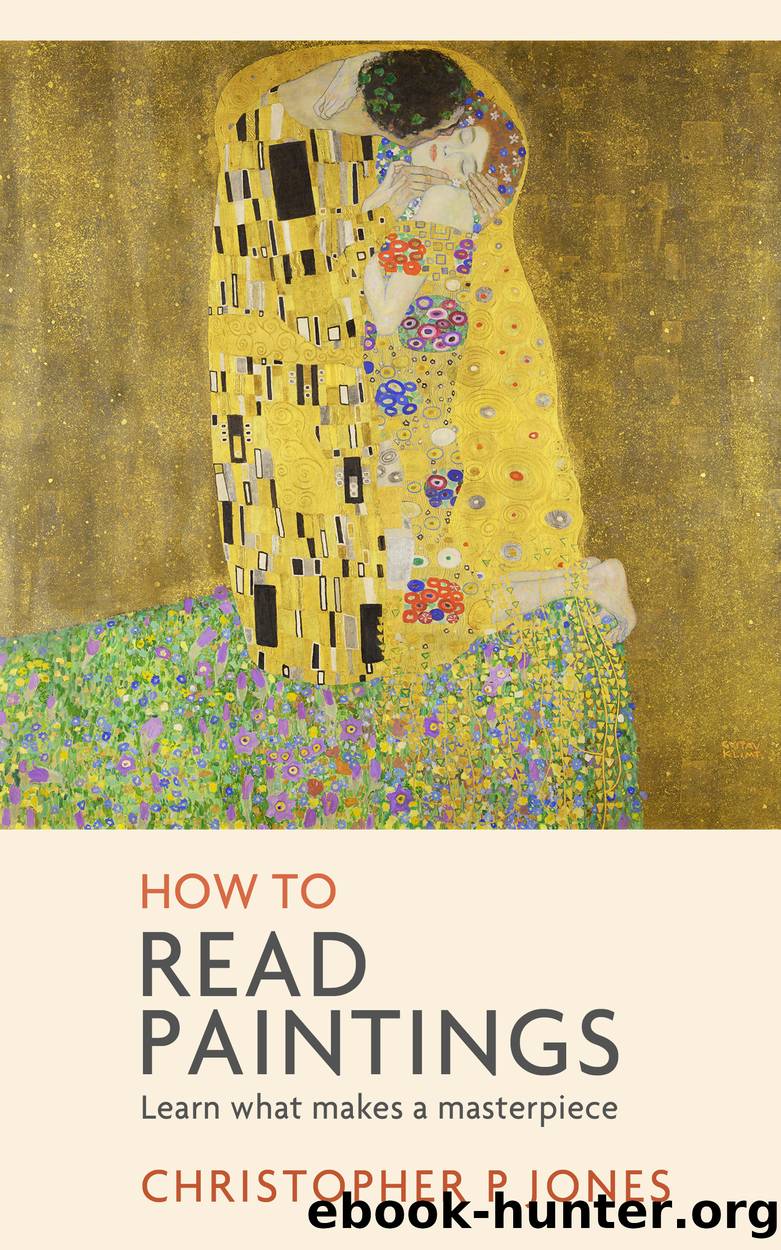How to Read Paintings by Christopher P Jones

Author:Christopher P Jones [Christopher P Jones]
Language: eng
Format: epub
Publisher: Thinksheet
Published: 2021-03-18T00:00:00+00:00
Wanderer above the Sea of Fog (c. 1818) by Caspar David Friedrich
Oil on canvas
Kunsthalle Hamburg, Hamburg, Germany
11
Assumption of the Virgin by Titian
A perfectly composed work of art that expresses the rapture of the Virgin Maryâs ascent into heaven
What do you see? A woman standing on a bowl of cloud, apparently rising upwards, lifted by winged cherubs. Beneath her a crowd of onlookers gazes on in wonderment.
The image shows the Virgin Mary being lifted towards heaven. She stands on a rising wave of cloud, and as she enters the realm of God, she opens he arms in rapture.
As a painted description of a soul ascending to heaven, the image brings to life what might otherwise be a difficult theological concept. Beneath her cloud, the physical realm of earthly life is huddled and chaotic: the men in the lower section are surprised, alarmed and in awe. By contrast, the space of heaven is given geometrical elegance: a glowing circle of light, where there is no cause for panic but rather a place of serenity.
Titianâs painting of the Assumption of the Virgin, made around 1518, is one of the most famous painted depictions of Maryâs ascent into heaven. He made the work when he was around 26 years old. The painting is nearly seven metres high and hangs above the high-altar of the Basilica di Santa Maria Gloriosa dei Frari in Venice.
You donât have to be a Christian to enjoy this painting; you donât even need to believe in heaven to understand where the woman on the cloud is going to. Shortly after her death, the Virgin Maryâs spirit emerged from her tomb and was born upwards towards heaven. God is shown as a diagonal cleft in a golden ether. Mary herself stands in a devout pose. Her drapery twists around her as if caught by a breeze, emphasising the animation of her ascent. She stands on bales of thick, doughy cloud, carried upwards by divine cherubs. Below, Titian has more or less omitted the stone tomb from where she has come and instead makes the terrestrial realm one of robed men charged with emotion: the apostles gathered in awe and lament.
Titian has brilliantly utilised the common convention in art of deifying vertical space, so that the picture grows more sacred as it rises upwards. To this end, the composition is clearly divided into three sections: at the bottom, the earthly realm where the apostles stand; above this, the Virgin being borne aloft by the clouds; and at the top, the glowing dominion of God.
From a compositional point of view, this three-part scheme is the most obvious of a complexity of subtle devices that Titian used to bring a sense of music and energy to the image, all of which help to further venerate the Virginâs persona.
Most elegantly, and most simply of all, the upper half of the painting forms a perfect circle made by the curved edges of the cloud and the rounded head of the panel, at the very centre of which the Virginâs head is exactly positioned.
Download
This site does not store any files on its server. We only index and link to content provided by other sites. Please contact the content providers to delete copyright contents if any and email us, we'll remove relevant links or contents immediately.
The Japanese by Christopher Harding(1086)
Watercolor With Me in the Forest by Dana Fox(753)
A Theory of Narrative Drawing by Simon Grennan(742)
The Story of the Scrolls by The Story of the Scrolls; the M(725)
Glittering Images: A Journey Through Art From Egypt to Star Wars by Camille Paglia(717)
Boris Johnson by Tom Bower(620)
This Is Modern Art by Kevin Coval(599)
The Art and Science of Drawing by Brent Eviston(591)
Frida Kahlo by Frida Kahlo & Hayden Herrera(586)
AP Art History by John B. Nici(575)
Banksy by Will Ellsworth-Jones(569)
War Paint by Woodhead Lindy(551)
Van Gogh by Gregory White Smith(547)
Scenes From a Revolution by Mark Harris(544)
Draw More Furries by Jared Hodges(544)
About Looking by John Berger(543)
Ecstasy by Eisner.;(535)
100 Greatest Country Artists by Hal Leonard Corp(524)
Young Rembrandt: A Biography by Onno Blom(514)
